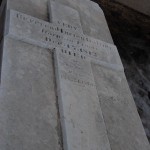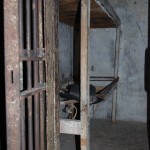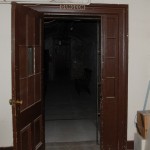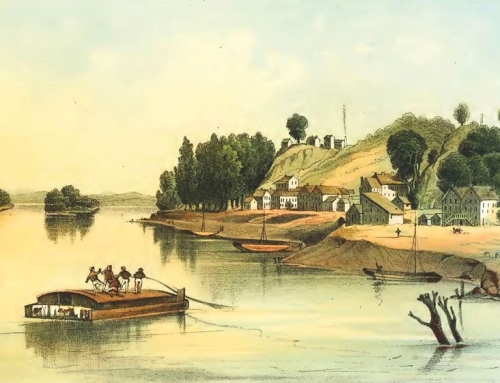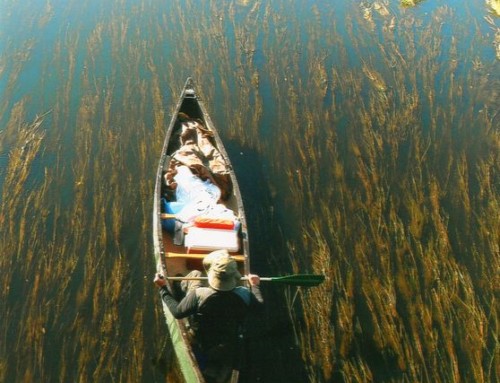When I visited with the Prairie du Chien (Wisconsin) Chamber of Commerce last week, I learned that the old courthouse has a jail/prison/dungeon in the basement that is sometimes open for tours. I got the name of a contact in the local historical society who had led tours in the past. I called, but he was too busy to take me around that day, so he suggested I go to the county clerk’s office and try to arrange a visit through them. The folks in the clerk’s office were, frankly, confused about my request and sent me to the Sheriff’s office. When I got there, two deputies standing in the hallway suggested I try the District Attorney’s office. When I explained what I was looking for at the DA’s office, they were even more confused than the county clerk but suggested I wait for Brenda, the building maintenance person, to return from lunch. I waited about 10 minutes, then went back to the deputies, who were now engaged in escorting inmates from their cells to a court room. That didn’t seem like a good time to be asking more questions, so I gave up.
A few minutes later I was standing in front of St. Gabriel’s Church taking pictures of the tomb of Father Lucien Galtier—the person who is at least partially responsible for the fact that the town across the Mississippi River from Minneapolis is now known as St. Paul instead of Pig’s Eye—when I heard a voice saying “There’s a lot of history with that church.” That was Phil. We chatted about the church and his (deep) family roots in Prairie du Chien. I told my story about trying to get into the basement to see the old jail, and he mentioned that he was on his way to the courthouse to visit his son, Jerry, who, it just so happens, is a dispatcher for the police department. He thought his son might be of some help, so I tagged along. When we got there, Jerry was a bit busy dispatching, but he called Brenda, the maintenance person, and I finally got my tour of the jail.
The jail itself is a creepy place. Deep in the basement of the old courthouse with little access to natural light, each cell is about 7 feet deep by 5 feet wide, built of thick limestone blocks darkened by years of smoke from kerosene lamps, and secured by a heavy iron door.
I’m not exactly sure what to call this place, though. Some call it the Territorial Prison (or jail), but it was never actually a prison in the Wisconsin Territory, because it was built in the 1860s, nearly 20 years after Wisconsin became a state. Some folks in Prairie call it The Dungeon, which is much sexier, although no more accurate. Whatever you call it, it’s a cool place to visit.
My thanks to Brenda, a gracious and knowledgeable guide, for taking the time to show us around. And, thanks to Phil, for his generosity, good conversation, and good timing.
- Father Galtier’s grave
- Old Jail, Crawford County Courthouse
- Old Jail, Crawford County Courthouse
- Old Jail, Crawford County Courthouse
© Dean Klinkenberg, 2009
